Many paintings rely on quite subtle clues as to their reading. Is that figure simply a portrait, or are they intended to tell us more, even refer to a narrative? What’s going on in this group of people, general hubbub or is there something more? In this article I’m going to look at the direction of gaze, and tomorrow at hands and gestures such as pointing.
Being visual art, paintings often are at least partly about, or refer to, the act of looking. For most painters, this is a central concern in their figurative works. A single figure shown looking straight at the viewer, or (in more recent paintings in particular) with a fixed gaze at an object outside the picture, is most likely to have been posed for a straight portrait. Once their gaze is directed at an object or another figure, there’s likely to be something else going on.
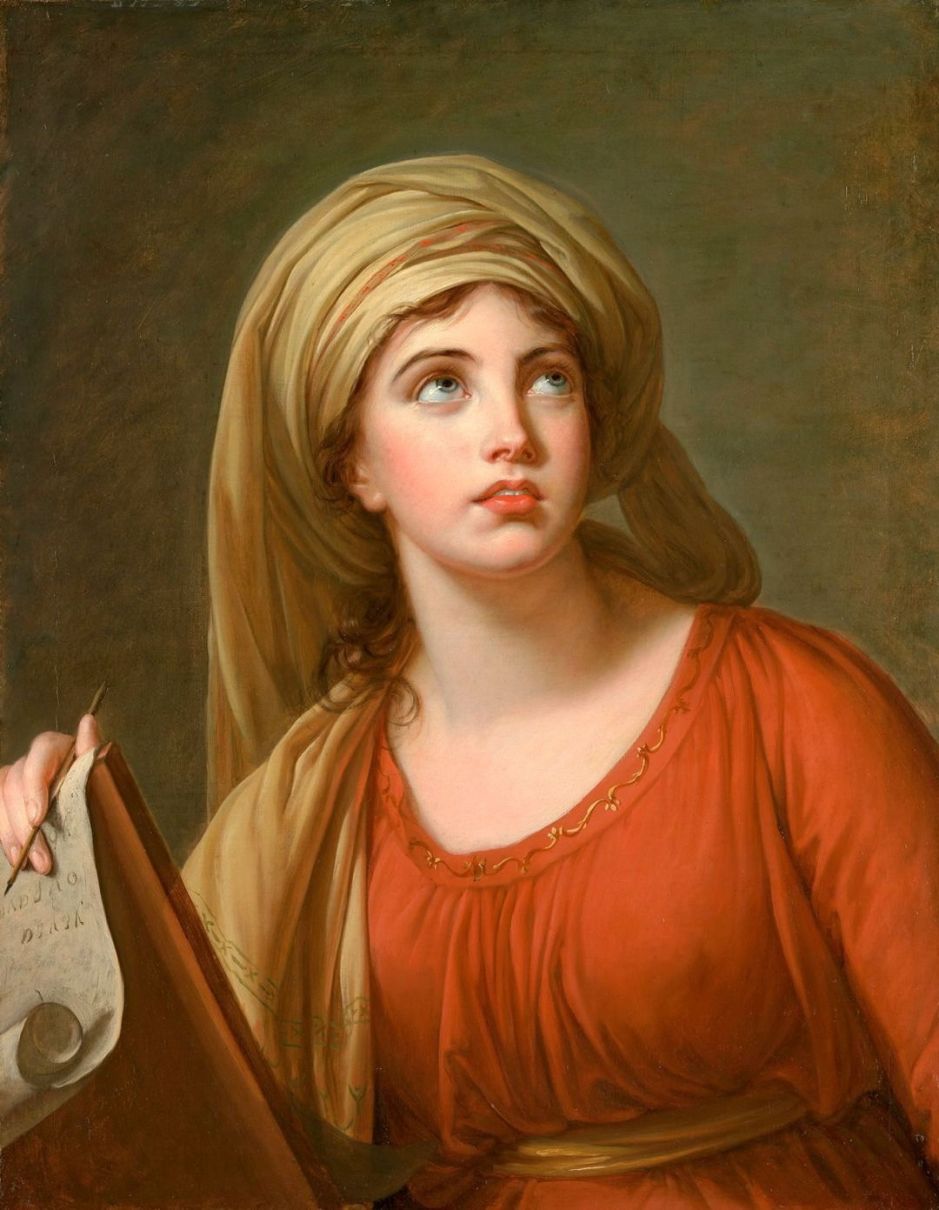
The gaze of a single figure can carry important meaning, as in Louise Élisabeth Vigée Le Brun’s Life Study of Lady Hamilton as the Cumaean Sybil from 1792. Coupled with her ‘eastern’ headdress, distinctive robes and scroll, her heavenly gaze tells us that she is under divine inspiration.
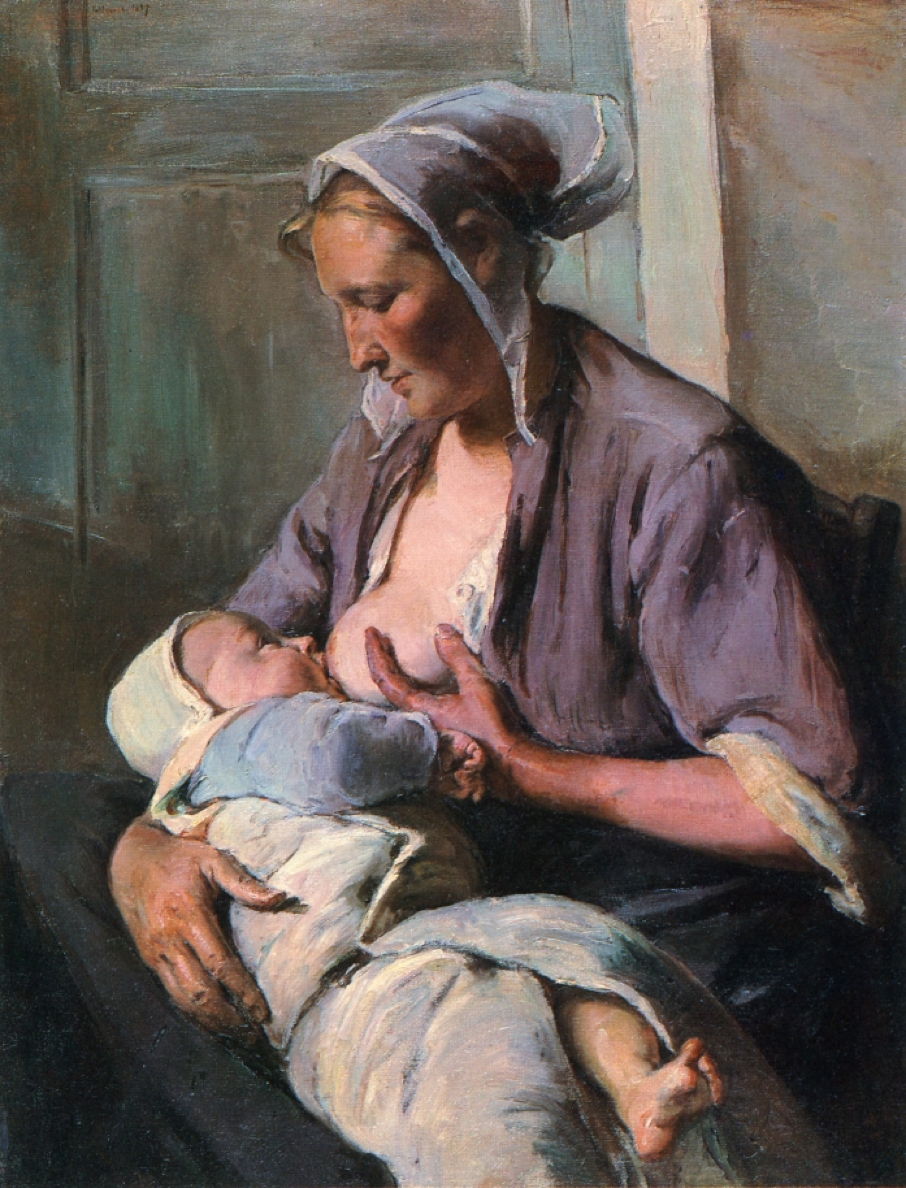
Mothers and their children are another good example, whether in religious paintings of the Virgin Mary and infant Christ, or Elizabeth Nourse’s superb Motherhood from 1897. Closer reading reveals that the mother here isn’t a conventional subject either: her face is tanned from outdoor work, and her hands have clearly toiled long and hard in the soil.

One of the most intense painted gazes is that between Gustave Moreau’s Oedipus and the Sphinx (1864), which stands in stark contrast to that of mother and infant. These two are right in one another’s face, staring one another out. The Sphinx is already latched onto what she assumes will be her next and delectable young meal, and promises to be femme fatale for the young man.
Oedipus knows that he cannot falter. A false guess in his answer to the Sphinx’s riddle, even a slight quaver in his voice, and this beautiful but lethal beast will be at his throat. His left hand clenches his javelin, knowing that what he is about to say should save his life, and spare the Thebans. He will then no longer be pinned with his back to the rock, and the threat of the Sphinx will be gone.

With larger groups, it’s worth taking the time to consciously examine the gaze of each face you can see in the painting.

If it’s just a group portrait, as in Henri Fantin-Latour’s Homage to Delacroix from 1864, then it’s down to identifying the individuals and their setting. Without interactions between the figures, this is a collection of eleven individual portraits.
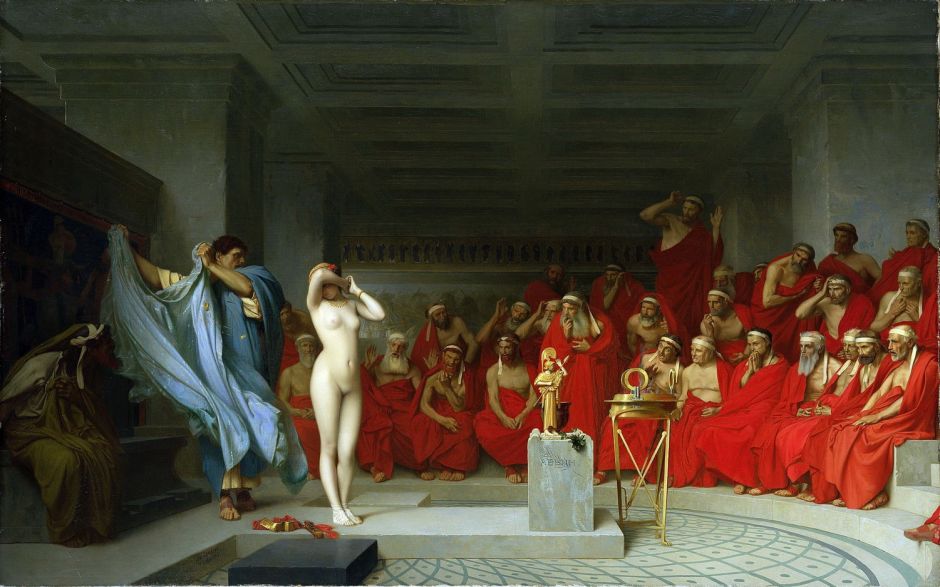
In Jean-Léon Gérôme’s Phryné before the Areopagus from 1861, the elders of the court are, almost without exception, staring at the naked body of the highly successful and very rich courtesan (hetaira) who has been brought to trial before them for the serious crime of impiety. Their faces (below) respond with emotions ranging from pure fright, to anguish, grief, or disbelief – but they can’t take their eyes off her. She has responded by turning away from them and covering her eyes.
When it seemed inevitable that Phryné would be found guilty, one of her lovers, the orator Hypereides, took on her defence. A key part of that was to unveil her naked in front of the court, in an attempt to surprise its members, impress them with the beauty of her body, and arouse a sense of pity. The legend claims that this ploy worked perfectly, and with his skill in using gaze, Gérôme’s painting makes that crystal clear.

Sometimes the importance of gaze lies in what the figures are not looking at.
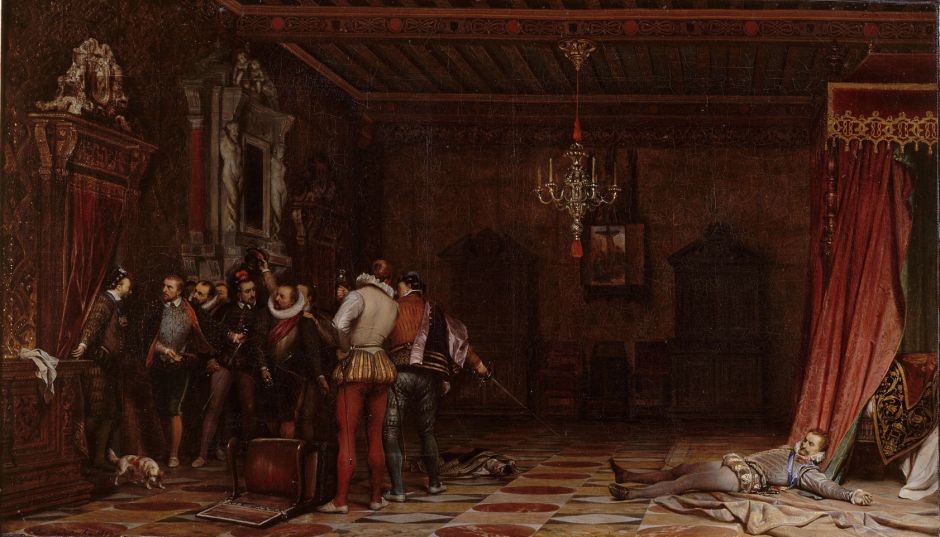
In Paul Delaroche’s account of The Assassination of the Duke of Guise in the Château de Blois in 1588, painted in 1834, the artist has divided his canvas in two. On the right, the Duke of Guise lies, dead, in a melodramatic posture with his arms outstretched, at the foot of a bed. At the left, a group of men are talking with one another, most clutching their swords, but none paying the slightest attention to Guise’s body, as if it was not there.
This assassination, and that of Guise’s brother, the Cardinal of Guise, the following day resulted in such outrage among the Guise family that Henry III, who was largely responsible, had to flee and take refuge with Henry of Navarre. The following year Henry III was assassinated by an agent of the Catholic League.
Some of the most fascinating paintings feature complex chains of gaze which need more careful study.
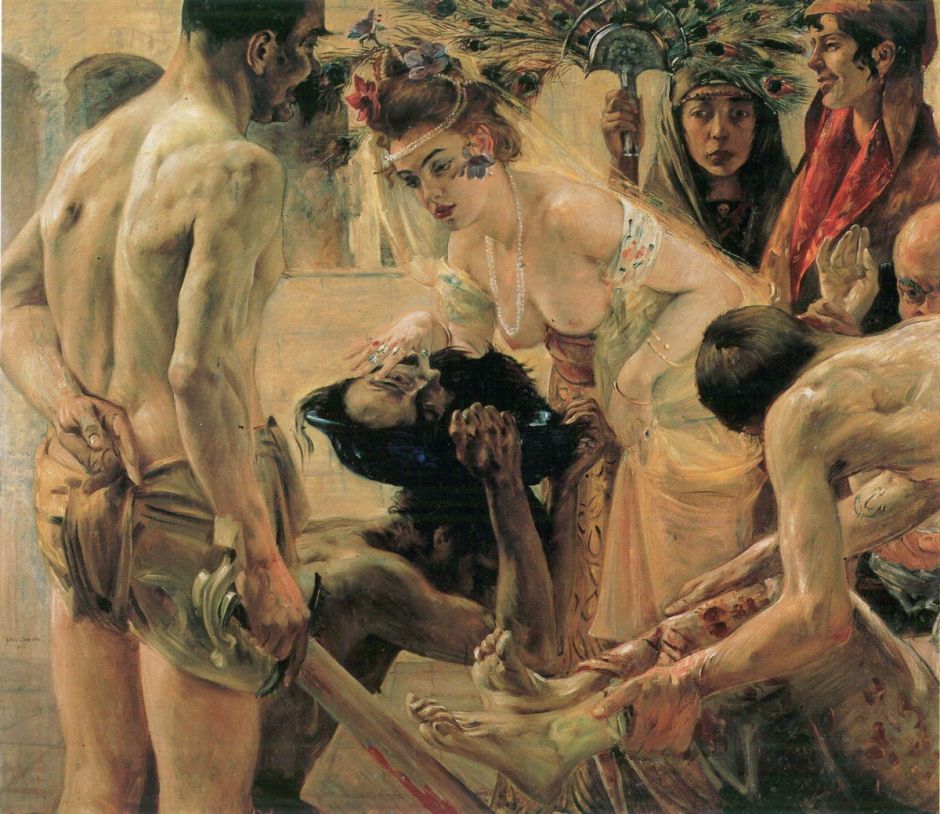
One my favourites among these is Lovis Corinth’s second and more finished version of Salome from 1900.
Salome is staring intently at the lower abdomen of the executioner. Her right hand is stretching open the left eye of the severed head of John the Baptist, which appears to be staring up at her. The executioner and the young woman at the top right are laughing at one another, but a third woman beside her has a serious, almost sad expression, as she stands holding a very large peacock fan.

The chain of gaze here is central to the painting’s narrative: John’s eye stares at Salome, who stares at the executioner’s crotch, who laughs at the young woman at the top right, who laughs back at him. Watching sombre and detached from behind is the figure of death.
I end this article with three paintings in which gaze is complex. Two probably don’t contain any particular meaning, but the third is one of the greatest masterpieces in the history of painting in Europe.
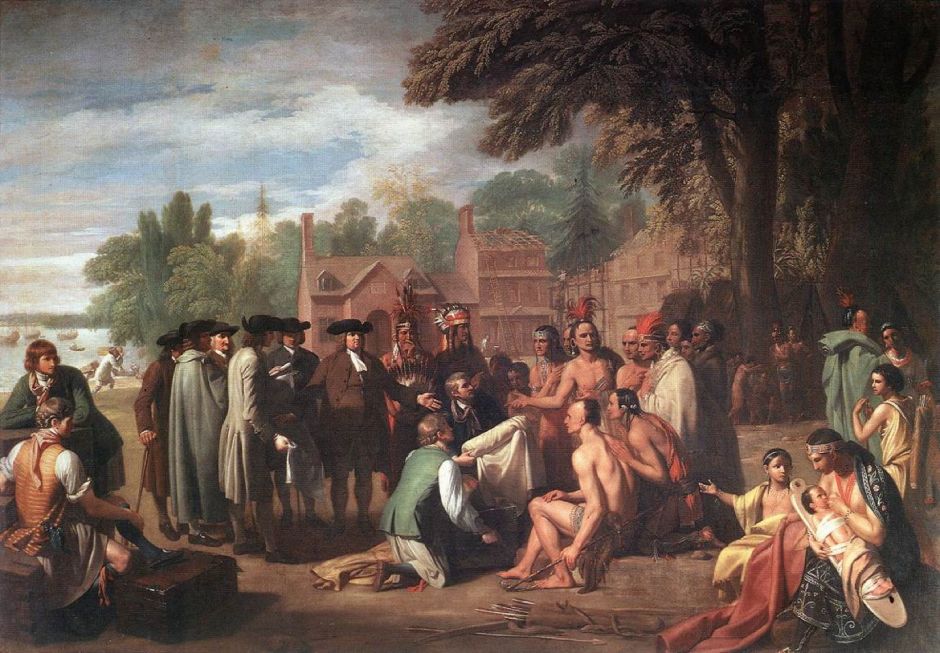
Benjamin West’s The Treaty of Penn with the Indians or William Penn’s Treaty with the Indians was exhibited at the Royal Academy in 1772. This shows the founder of the state of Pennsylvania purchasing land for his colony from the Lenape people, with a treaty of peace between the colonists and the ‘Indians’, in 1682. Looking at the directions of gaze of its figures suggests that the artist had no consistent idea of where they should be looking, and the viewer is even hard-put to identify its central figure William Penn.
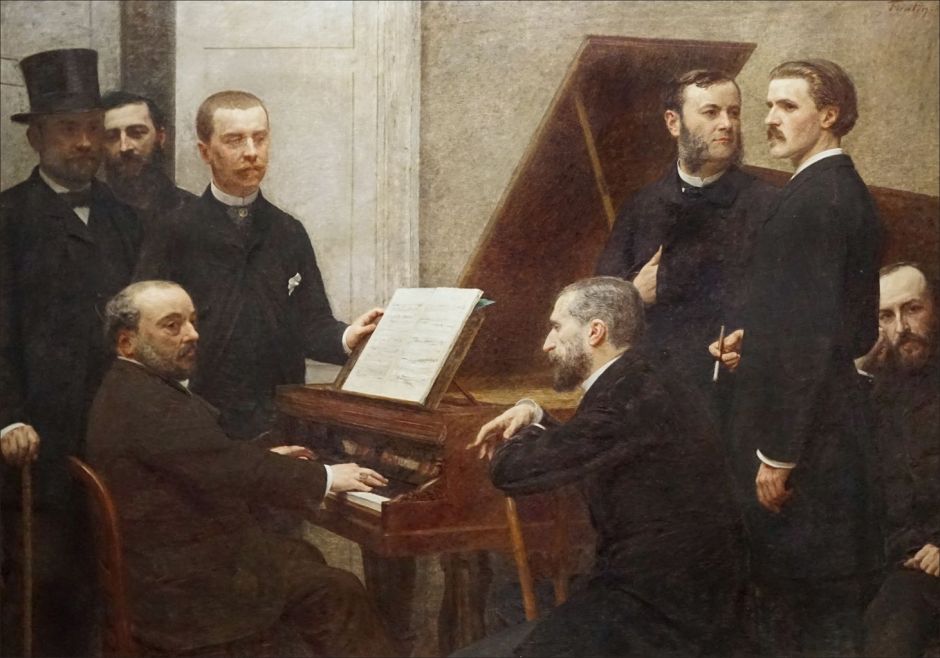
The sixth and last of Henri Fantin-Latour’s group portraits, Around the Piano from 1885, shows members of a Wagner fan club in Paris at the time. They are each gazing at something different and not interacting in the least. Emmanuel Chabrier is playing the piano without looking at its keyboard or the music, and its other figures (bar one) appear distracted.
Not so for the members of the Spanish royal court in Diego Velázquez’s Las Meninas from about 1656-57.
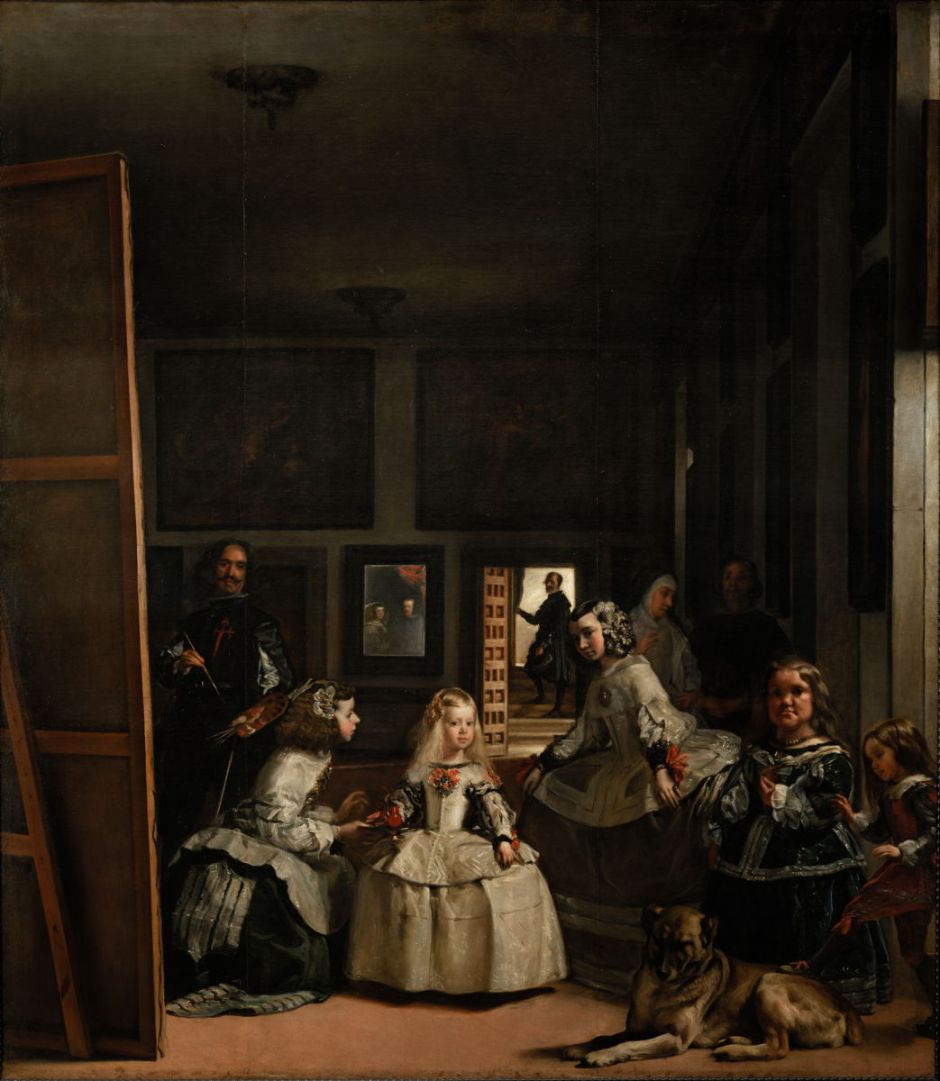
There has been dispute over whether the reflection shows the royal couple stood where the viewer is, or the mirror is reflecting their painted images on Velázquez’s canvas. How their images were generated is probably of secondary importance, as either way the gaze of most of the other figures is clearly directed not at the viewer, but at the King and Queen, who may be getting up to leave after sitting for Velázquez to paint them.
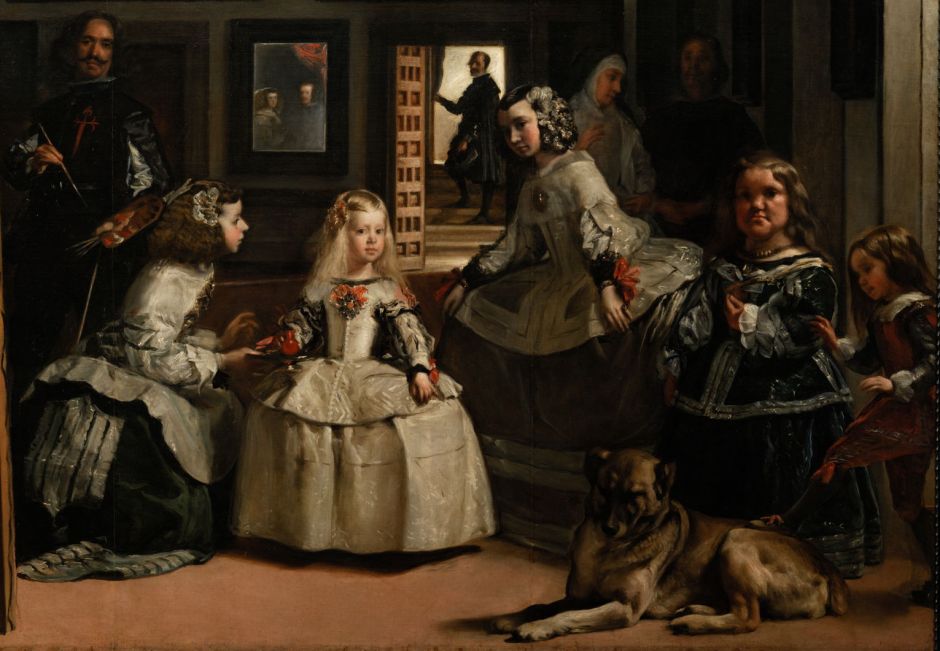
Tomorrow I look at hands, pointing, and other gestures we can make with them.

